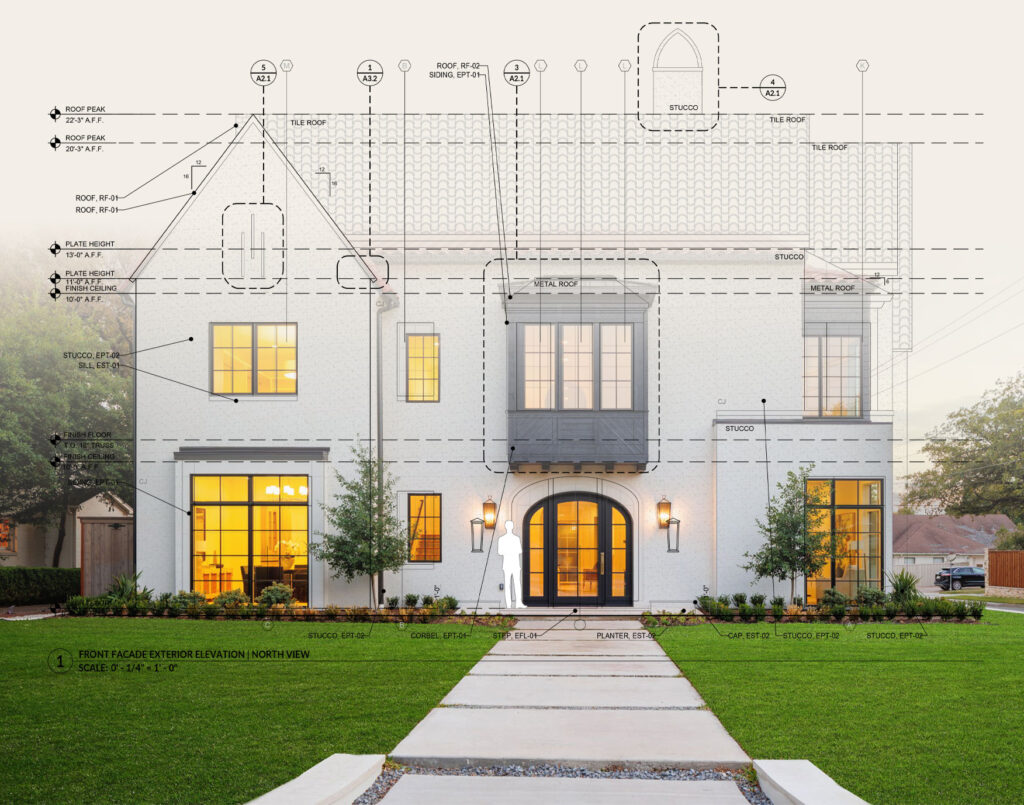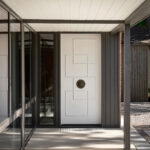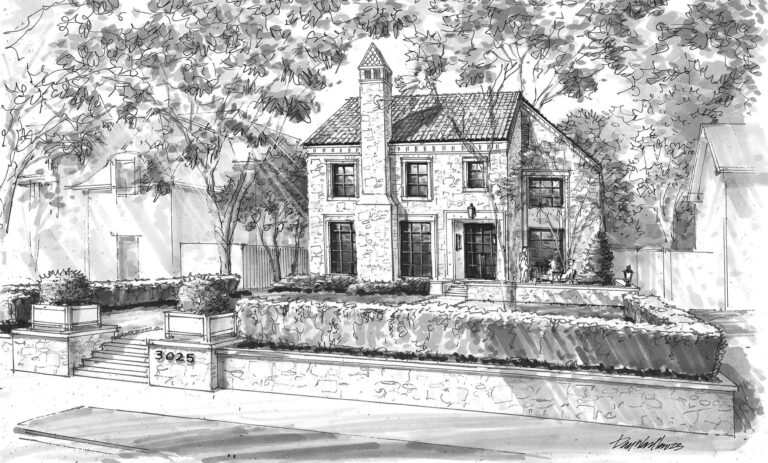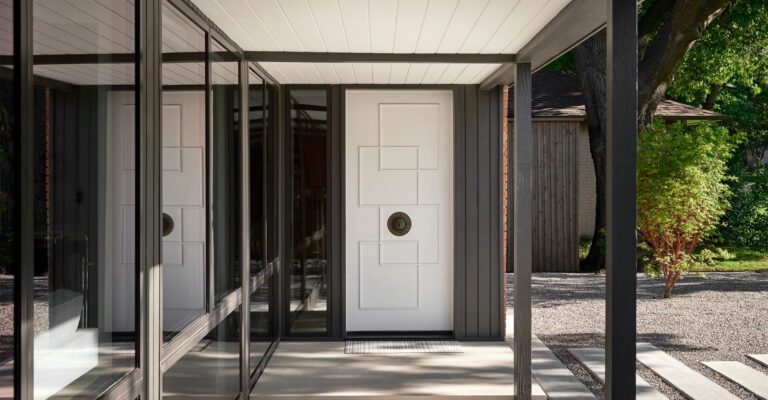What Site Constraints Should I Consider Before Building In Dallas?
You are here: Home → Architecture Advice Center → Building in Dallas
Related posts

When you start thinking about building a home in Dallas, most of the excitement goes toward design—how big the kitchen should be, what the façade will look like, or where the pool goes. But before any of that, you need to understand the site itself. The land tells you what is possible, what will be difficult, and what you’ll have to compromise on. Ignoring site constraints early is one of the fastest ways to create headaches later. Here are the main factors to consider before breaking ground.
Zoning and Setbacks
Dallas zoning laws dictate what you can build on your lot. This includes how tall the house can be, how much of the lot you can cover, and how far you must stay back from property lines.
- Front yard setbacks keep your home a certain distance from the street.
- Side yard setbacks ensure spacing between neighbors.
- Height restrictions protect neighborhood scale.
For example, in Highland Park, setbacks can eat into lot width quickly. If you plan for a wide contemporary design, you may end up squeezed. Always check zoning early, because designing a house that doesn’t fit legally is wasted effort.
Lot Size and Shape
The size and shape of the lot influence the footprint of the house. A narrow lot in Lakewood requires different strategies than a deep Preston Hollow estate.
- Narrow lots often need vertical design solutions.
- Deep lots provide more room for courtyards or rear-focused layouts.
- Irregular shapes can limit where you place driveways, pools, or outdoor living areas.
If you’re building a home, don’t assume more square footage is always better. A well-scaled design on a smaller lot can feel more livable than forcing an oversized house into a tight space.
Topography and Drainage
Dallas isn’t known for dramatic hills, but slope and drainage matter. A site that looks flat may hide problems.
- Even small grades affect foundation design.
- Poor drainage leads to water pooling near the house, which causes long-term structural issues.
- Retaining walls may be required, which adds cost.
In neighborhoods like Bluffview, where topography is more varied, the slope of your lot may drive the design. Terraced gardens, split-level homes, or elevated foundations may be the solution, but you need to budget for it early.
Soil Conditions
Not all Dallas soil is equal. Much of the area sits on expansive clay, which swells when wet and shrinks when dry. This movement creates stress on foundations.
- Soil testing is critical before building a home.
- The results dictate whether you need a slab-on-grade, pier-and-beam, or deep pier foundation.
- Ignoring soil conditions risks cracks, shifts, and costly repairs later.
An engineer will usually review the soil report and recommend the right foundation type. This isn’t the glamorous part of building, but it is one of the most important.
Utilities and Easements
You’ll also need to confirm access to utilities: water, sewer, gas, and electric. In some Dallas neighborhoods, connecting may be straightforward. In others, you may face challenges.
- Easements can cut into usable land. A utility easement along the back of the property might prevent you from placing a pool there.
- Relocating utility lines is possible but expensive.
- In newer developments, infrastructure may not yet be complete, which delays construction.
Always check the plat and ask your surveyor to mark easements clearly. Designing without this knowledge is a recipe for rework.
Trees and Vegetation
Dallas has strict tree protection ordinances. Mature trees, especially live oaks, may be protected.
- Removing a protected tree requires city approval and often mitigation fees.
- Large trees affect driveway placement, building footprint, and even foundation design.
- Preserving trees adds value and shade but requires careful planning.
For example, on a Preston Hollow estate lot, you may want a wide driveway, but a heritage oak might block it. The city could deny removal, forcing you to redesign circulation. Knowing this upfront avoids surprises.
Neighborhood Covenants
If you’re building in a subdivision or planned community, you may face additional rules from a homeowners’ association (HOA).
- Architectural guidelines might limit exterior materials, roof pitches, or colors.
- Some neighborhoods restrict flat roofs or bold contemporary design.
- Approval processes can take time and require multiple submissions.
Even in luxury communities, HOA restrictions can be strict. Before building a home, make sure your vision aligns with neighborhood rules.
Floodplains and Environmental Issues
Certain parts of Dallas sit in flood-prone areas. Building in or near a floodplain requires additional engineering and insurance.
- Check FEMA flood maps before purchasing a lot.
- Even if the house isn’t in a designated floodplain, poor drainage in the area can affect livability.
- Environmental conditions like wetlands, creeks, or protected habitats add complexity.
Building a home near White Rock Creek, for example, might give you views, but it may also mean higher engineering costs and long-term flood risk.
Budget and Timeline Impact
Each site constraint carries cost and time implications.
- Complex foundations from soil or slope issues cost more.
- Protected trees may add design revisions and delays.
- Utility relocation is both expensive and slow.
If you account for these factors early, you can prioritize what’s worth spending on. Ignoring them often leads to budget overruns and frustration mid-project.
Work With Professionals
The best way to navigate site constraints is to work with a team that understands Dallas conditions. A licensed architect, surveyor, and engineer will help you interpret zoning, soil, and utility reports. In Texas, architects are trained to balance design ambition with practical site realities. That combination is what ensures your home not only looks beautiful but also functions for decades.
Building a home in Dallas isn’t just about architecture. It starts with the land. Zoning, setbacks, soil, utilities, trees, and topography all shape what you can and should do. If you take time to understand these constraints early, you’ll save yourself stress and expense later. More importantly, you’ll end up with a home that sits comfortably on its site, designed for both beauty and longevity.



